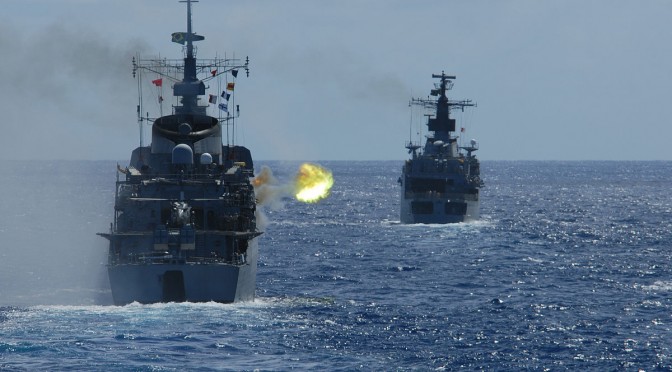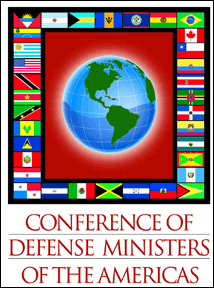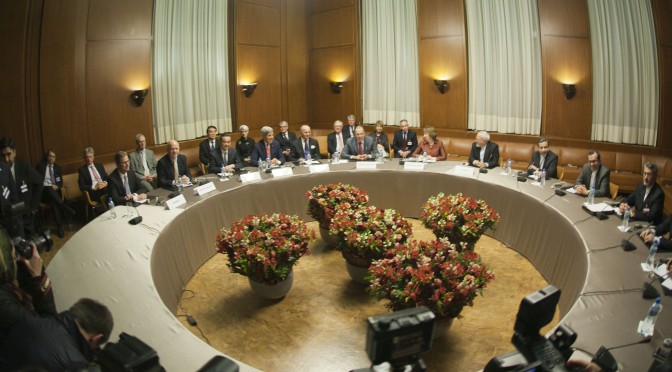By Dr. Roberto Pereyra Bordón
En este breve artículo pretenderé resumir mi pensar sobre el porqué de las armadas, su necesidad y su futuro.
Cuando un ciudadano piensa en el mar, lo ve su vastedad, y en su mente aparece un horizonte, pero lo que naturalmente no percibe es lo que está más allá de éste, probablemente no piense lo que ocurre en su subsuelo, en su lecho, en sus profundidades y en su superficie.
Probablemente, también ignore las obligaciones que los estados, como tales tienen en múltiples áreas, como ser la salvaguarda de la vida humana en el mar.
El mar es en si mismo relevante, porque dos tercios de la superficie del planeta está cubierta por agua[1]. El hemisferio Sur, posee solamente un 19% de tierra y el Hemisferio Norte, posee un 39%.
La importancia de los mares y los océanos en la vida del hombre, como fuente de recursos y de unión es una verdad en sí misma, que no merece ser analizada, ni cuestionada. Basta sólo pensar que mas del 60% de la población mundial vive sobre las costas.
En América, como en el resto del mundo las “necesidades de los pueblos, sus cargas”, se transportan por via marítima, siendo el mar el que permite la creación de grandes autopistas, que nunca colapsan, que no tienen cortes y que no se ven afectadas por la actividad humana[2].
Es conveniente resaltar que en el tema transporte marítimo existe a nivel mundial (institucional) una permanente atención, en tal sentido, el Secretario General de la Organización Marítima internacional sr. Efthimios Mitropoulos, en relación al Día Marítimo Mundial 2005, dijo: “vivimos en un mundo globalizado que se sustenta en una economía globalizada, economía que no podrá funcionar de no ser por los buques y el sistema del transporte marítimo”[3]
Tal como mencionan Keohane y Nye[4] vivimos en un mundo de poder e interdependiente, en tal sentido, prácticamente ninguna nación puede afirmar que es autosuficiente, ya que existe, en términos genéricos una “dependencia mutua[5]”.
Los recursos son cada vez mas escasos en una población mundial que crecerá cuatro veces desde 1950 al 2050, nos debemos entonces preguntar, dónde están los recursos y cómo los trasladaremos hacia nuestros paises, si es que no los tenemos, seguramente mayoritariamente será por via marítima, esto hace que ésta variable no cambie.
Éste mismo análisis, sobre la utilidad del mar, es hecho por quienes desde una perspectiva oscura tratan de efectuar negocios ilícitos de todo tipo.
Multiples amenazas se ciernen sobre el escenario marítimo, si alguien no las toma en cuenta los estados serán cada vez mas vulnerables en su interior producto del descuidar sus mares.
Los descubrimientos de petróleo en el mar, cada vez son mas importantes, recordemos la Amazonia Azul de Brasil, también no debemos olvidadar las presentaciones que los estados están haciendo sobre su plataformas continentales.
Siguiendo nuestro hilo conductor, y pensando en el para qué de una marina, miremos que sucede ante un gran cataclismo, ante la aparición de un evento tipo cisne negro, tema que fue descripto por Nassim Nicholas Taleb[6] en su libro con el mismo nombre, si nos preguntamos quienes están en capacidad de trasladarse, quienes tienen la capacidad apoyar al país hermano, que no tiene un aeropuerto a donde aterrizar, las armadas generalmente siempre pueden llegar, los medios marítimos preparados adiestrados, dan respuesta. Vasta pensar en Haití, 2010. Las marinas fueron quienes dieron el punta pie inicial y lograron el restablecimiento de las vías de comunicaciones, brindado primeros auxilios y estableciendo un sistema de comando y control adecuado a la emergencia.
Una marina que puede desplegarse de una parte del globo a otra para proteger sus intereses, también es capaz de hacerlo para asisitr a sus propios connacionales cuando éstos, en su propio territorio, se ven afectados por catástrofes.
La capacidad de trasportar hospitales flotantes, de ser el primer socorro ante una emergencia son valores que podrán ser no considerados como tales, pero que no pueden negarse como una capacidad del estado ante emergencias o necesidades propias.
Por otro lado tampoco debemos olvidar el concepto fundacional que tuvieron las armadas, cuantos de los países del hemisferio han desarrollado zonas inhóspitas debido al esfuerzo abnegado de las marinas que se ocuparon en abrir rutas navegables y asegurar el abastaecimiento a territorios casi olvidados.
La globalizacion ha generado y aumentado la vinculación internacional y las marinas no se han quedado atrás, ejercicios internacionales, permiten compartir vivencias, experiencias, aumentar la capacidad de trabajar en equipo y de poder constituir a futuro una posible fuerza naval internacional, que hoy en el hemisferio de se ve plasmada en multiples ejercicios internacionales navales, con multiples nombres y denominaciones segun los paises que intervienen. Ejercicios que dejan nutridas agendas de lecciones aprendidas.
Las marinas, seguirán los mandatos que sus autoridades civiles dicten, se reducirán, se reorganizaran o podrán desaparecer, independientemente de lo que suceda, nada cambiará o podrá negar la realidad, de lo que significa no contar con una marina o contar con una marina ineficiente o inpoperante, ello implica no comprender la real magnitud del escenario mundial en que vivimos, donde lo importante son los intereses de los estados, y siempre estos podrán ser apoyados desde el mar.
Para concluir, me gustaria resaltar que percibo una clara falta de comunicación del quehacer naval y marítimo a la sociedad, que la necesidad del mar no decrecerá, como tampoco decrecerá el uso del mar como elemento utilizado para actividades ilícitas, y que el mar es el canal generalmente idóneo para el apoyo ante emergencias propias y de otros países.
Finalizando, sólo nos damos cuenta de la importancia de alguien-algo en el momento que no podemos contar con el, cualquier lector habrá pasado por esto, pues entonces tratemos de que estó no nos ocurra.
1]N. del A. Las referencias numéricas fueron obtenidas del CURSO “INTERESES MARÍTIMOS ARGENTINOS”- Ciclo 2005. Centro de Estudios Estratégicos de la Armada
[2] N. del A. Por lo general, aquí tendremos que hacer una excepción con la piratería y el terrorismo marítimo.
[3] MITROPOULOS Efthimios, Obtenido del Texto del discurso del Secretario General de la OMI, en el Día Marítimo Mundial 2005. Titulado “el transporte marítimo internacional vehículo del comercio mundial”.
[4]KEOHANE R & NYE J, Poder e Interdependencia, la política mundial en transición. Colección Estudios Internacionales. 1ª Edición. Editor Grupo Editor Latinoamericano. 1988, p 22. Traducido por Franco Heber Cardoso Power and Interdependence, world politics in transition. Editor Little, Brown and Company, 1977.
[5] Ibidem
[6] Taleb se refiere a casi todos los grandes descubrimientos científicos, hechos históricos, y logros artísticos como “cisnes negro”, – sin dirección e inesperados.
Señala como ejemplo de evento de Cisne Negro los ataques del 11 de septiembre, entre otros. Taleb, The Black Swan, Second Edition, Penguin, 2010, Prologue p xxi
Dr. Roberto Pereyra is a retired rear admiral in the Argentine Navy and senior professor at the Inter American Defense College.



 some decades ago projected a plan for the inter-American defense coordination of the maritime traffic (Plan para la Coordinación de la Defensa del Tráfico Marítimo Interamericano – PLANDEFTRAMI, 1959). The CODEFTRAMI substituted the first plan by the end of 1996 and it has divided the areas into four groups: North Atlantic, South Atlantic, North Pacific and South Pacific. Whereas differently oriented, the process of institutionalization was effective for the Atlantic South Area, called AMAS (Área Marítima del Atlántico Sur), that was formed by Brazil, Argentina, Uruguay, and Paraguay.
some decades ago projected a plan for the inter-American defense coordination of the maritime traffic (Plan para la Coordinación de la Defensa del Tráfico Marítimo Interamericano – PLANDEFTRAMI, 1959). The CODEFTRAMI substituted the first plan by the end of 1996 and it has divided the areas into four groups: North Atlantic, South Atlantic, North Pacific and South Pacific. Whereas differently oriented, the process of institutionalization was effective for the Atlantic South Area, called AMAS (Área Marítima del Atlántico Sur), that was formed by Brazil, Argentina, Uruguay, and Paraguay.
 With the P5+1 Iran Nuclear deal on the table last week, we turn our eyes to Iran and her varied global and regional machinations. Is Iran ascendant, over-stretched, or is it a wash? Friend of the podcast Behnam Ben Taleblu joins us again to discuss the Iran nuclear deal, as well as Iranian regional military and political operations.
With the P5+1 Iran Nuclear deal on the table last week, we turn our eyes to Iran and her varied global and regional machinations. Is Iran ascendant, over-stretched, or is it a wash? Friend of the podcast Behnam Ben Taleblu joins us again to discuss the Iran nuclear deal, as well as Iranian regional military and political operations.
 America’s maritime security picture as well. The region’s naval and coast guard forces are modernizing accordingly to meet these challenges and opportunities.
America’s maritime security picture as well. The region’s naval and coast guard forces are modernizing accordingly to meet these challenges and opportunities.